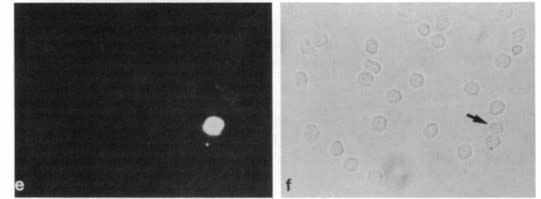
Cat. #157888
Anti-Xyloglucan [LM25]
Cat. #: 157888
Unit size: 100 ug
Availability: 10-12 weeks
Target: XLLG, XXLG and XXXG oligosaccharides of xyloglucan. It can bind to xyloglucan polymers in several species.
Class: Monoclonal
Application: IF, ELISA
Reactivity: Land plants
Host: Rat
£300.00
This fee is applicable only for non-profit organisations. If you are a for-profit organisation or a researcher working on commercially-sponsored academic research, you will need to contact our licensing team for a commercial use license.
Contributor
Inventor: Paul Knox
Institute: University of Leeds
Primary Citation: Pedersen et al. 2012. J Biol Chem. 287(47):39429-38. PMID: 22988248.
Tool Details
*FOR RESEARCH USE ONLY
- Name: Anti-Xyloglucan [LM25]
- Alternate name: ?(1-4) Xyloglucan
- Class: Monoclonal
- Conjugation: Unconjugated
- Reactivity: Land plants
- Host: Rat
- Application: IF, ELISA
- Description: Glycans are crucial for plant life and are used for storage, defense, and signaling and as structural cell wall components. Plant oligo- and polysaccharides are also important components of food and feed and have numerous industrial applications. Starch is the most common carbohydrate in the human diet, whereas plant cell walls provide bulk materials including timber, paper, and cloth, as well as fine chemicals, food ingredients, and biofuel feedstocks. The complexity and diversity of plant polysaccharides underpin their biological roles and many of their industrially important characteristics, but also produce challenges for research and optimal utilization. A detailed knowledge of the structures, functions, interactions, and occurrence of plant glycans is essential for understanding their complex contributions to plant life and to fully exploit their commercial potential. However, unlike proteins and nucleotides, complex carbohydrates are not readily amenable to sequencing or synthesis, and existing biochemical techniques for glycan analysis, although powerful, are usually low throughput.
- Immunogen: Generated using a neoglycoprotein incorporating a mixture of galactosylated oligosaccharides from tamarind xyloglucan (XXLG/XLLG-BSA)
- Isotype: IgM
- Recommended controls: IgG2a
Target Details
- Target: XLLG, XXLG and XXXG oligosaccharides of xyloglucan. It can bind to xyloglucan polymers in several species.
- Target background: Glycans are crucial for plant life and are used for storage, defense, and signaling and as structural cell wall components. Plant oligo- and polysaccharides are also important components of food and feed and have numerous industrial applications. Starch is the most common carbohydrate in the human diet, whereas plant cell walls provide bulk materials including timber, paper, and cloth, as well as fine chemicals, food ingredients, and biofuel feedstocks. The complexity and diversity of plant polysaccharides underpin their biological roles and many of their industrially important characteristics, but also produce challenges for research and optimal utilization. A detailed knowledge of the structures, functions, interactions, and occurrence of plant glycans is essential for understanding their complex contributions to plant life and to fully exploit their commercial potential. However, unlike proteins and nucleotides, complex carbohydrates are not readily amenable to sequencing or synthesis, and existing biochemical techniques for glycan analysis, although powerful, are usually low throughput.
Applications
- Application: IF, ELISA
Handling
- Format: Liquid
- Unit size: 100 ug
- Shipping conditions: Shipping at 4° C
References
- Pedersen et al. 2012. J Biol Chem. 287(47):39429-38. PMID: 22988248.






